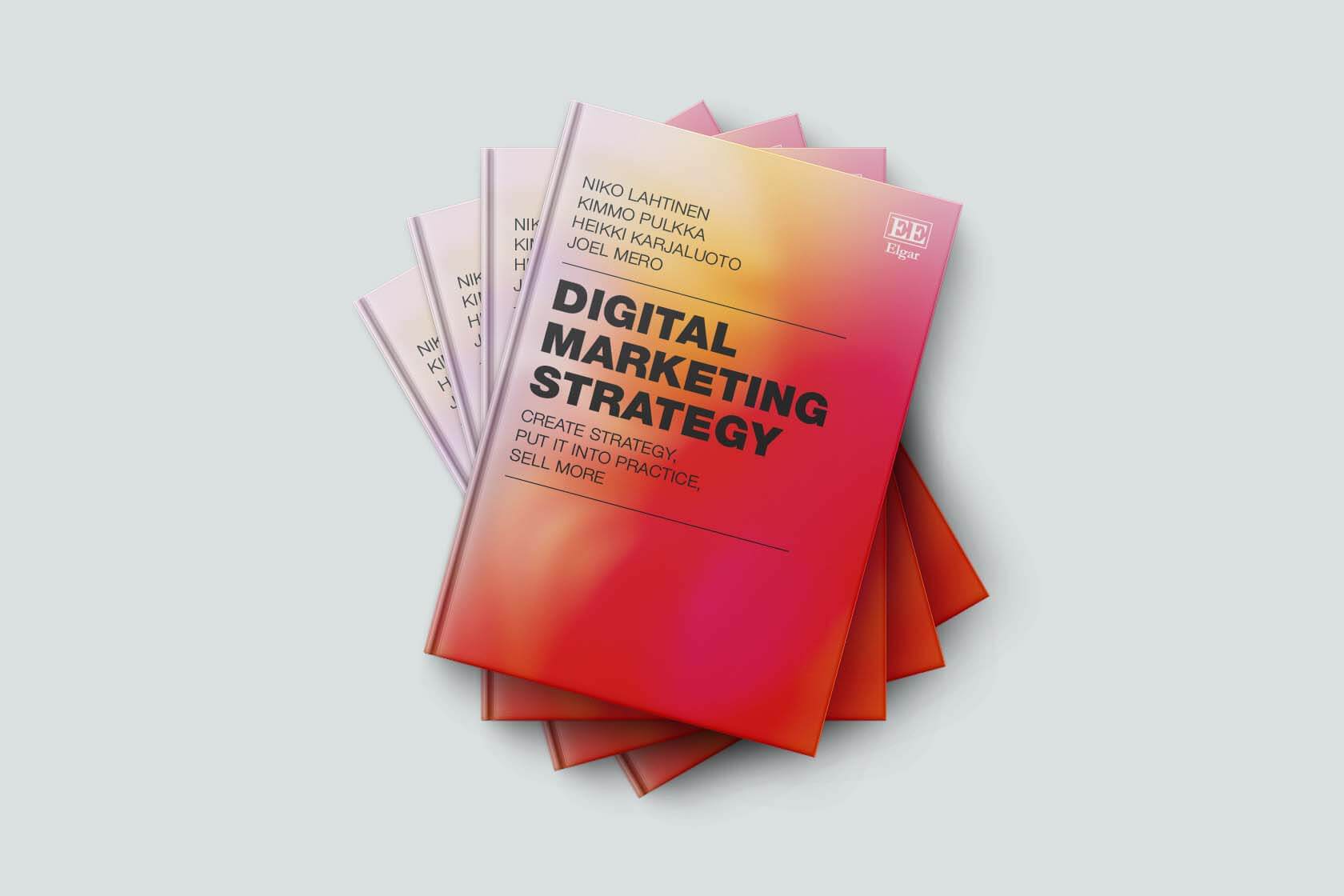Here is the perspective of our Google Ads team coach, Tiia, on Google’s world right now:
Google recognizes intention to purchase at all stages of the purchase process
Google provides superior tools to target advertising to different stages of a customer’s purchasing process. With Google Ads search ad, we can increase search engine coverage of products and services, display advertising can attract customer interest and remarket with highly specific criteria, while YouTube acts as a marketing coverage enhancer and brand communication tool. In practice, we can attract the customer’s interest even if they do not know about the company’s product in advance, or get the current customer to buy more.
Due to Google’s diversity, it is important to understand the goals and suitability of different ad types for every step of the purchase process. Google’s advertising platforms are not separate channels but create a marketing entity that keeps the company’s services at the heart of the customer’s purchase process from start to finish.
For example, many people rate Display advertising based on how much direct contact it brings. However, Display is not at its best in that, but the customer’s purchasing steps should be taken into account: Display is a good warm-up channel at the start of the purchase process, in which case the customer may not yet know of the company’s product. Of course, remarketing through Display to warm audiences visiting the company’s site is very successful.
Different ad types should be aware of what is an adequate goal for each step of the purchase process and even more importantly, which is the next step. The most important thing is to understand the business and take advantage of the different stages of the purchasing process one step at a time towards the main goal.
For large, multimillion-dollar projects, a customer’s purchasing decision can easily arise from half a year up, when Display advertising continuously keeps the company’s customer in mind. The content that is being shared must remove pain points in the way of the purchase decision in order to speed up the purchase decision. On the B2C side, the amount may be significantly lower, but shopping only comes as a result of a long consideration. An example of this is a geothermal heat pump.
How does Google find ready-to-buy audiences?
Google’s AI picks up mature people as a separate audience based on their online behavior. We can show different ads for the one searching on Google about traveling than those currently actively searching on Google about hotels, as their needs are likely to be different. One is not buying in that moment, but is a very potential customer for airlines and tour operators, for example, who can start warming up for the next resort. The other, in turn, has shown that they will be booking a hotel in the next few days, so he will be ready to buy in that moment. Once we understand the stages of our target group’s purchasing process and how to target them, the result of advertising is also better.
Based on Google’s data, creating different audiences is one of the best features for automated and personalized advertising. In addition, Google Ads features enable versatile audience testing and aggregation, based on which we can develop advertising in a very targeted way based on previous search behavior. We can show the customer ad content that is suitable at the right time.
KPI metrics help guide the development of advertising in the right direction
When monitoring Google advertising KPI’s metrics, differences between online store and service products should be taken into account. In online stores, it is important to monitor the growth of ROAS figures for advertising. For some online stores, more money can be invested in getting one customer through Google, as marketing continues with other measures, such as email. On the other hand, customers who make one-off purchases often want to be reached at a lower conversion price, which means that advertising needs to be planned more accurately. Otherwise, it will easily turn into loss-making.
In the sale of services, the ROAS figures for advertising are not seen directly from the data if the conversions do not have an established value. In this case, the profitability of advertising is calculated, for example, through margins and conversion prices and revenues by comparing the price of the service. In general, conversions of more pricey services cost more, as they also produce many times over.
In addition, it is good to look at how much one of the customer’s targeted measures has cost and what it should cost, taking into account the customer’s lifecycle value. This can be used to optimize the amounts used for various measures, such as contacts or guide downloads.
If you know that one download of the guide will bring your company an average turnover of €2.400 within a year, then the download will be happy to cost €100. Without that information, €100 can seem like a lot of money, making it easy to put advertising on a pause.
When developing advertising, it is worth following many of the same things Google Analytics tools show: which keywords bring the most sales or relevant traffic? How do customers move and stay on your site? Which audiences are the most profitable in the long run?
Advertising can be enhanced with Google’s tools in a variety of ways
I often come across three “errors” that hold back the results of Google advertising, which, by correcting advertising, are guaranteed to become more effective.
First, often ads lose impressions because ads cannot get into Google auctions. It can be due to the quality of the advertising or landing page, campaign settings, budget, competitive situation, or low price offers or search volume of keywords. The quality of advertising can be improved when you target an ad to match the Google search terms and website landing pages. For example, if one person picks up a “geothermal heat pump for a detached house” and the other a “geothermal heat pump for an apartment building”, then they should see different advertising versions and end up on different landing pages. Unfortunately, however, this is often not the case, and they see the same ad and end up on the same landing page. In this case, the landing page only speaks to another person.
For this reason, it is a good idea to create 3-5 ads per ad group for the same keyword so that you do not create the exact same ads for the same keywords. Another option is to take advantage of dynamic advertising, whereby Google automatically combines the best landing page and ad for both searches from pre-written ad versions. When the content on the website matches the ads and the ads match the searches, then the ad’s quality scores increase, and advertising becomes more affordable. Of course, it also produces a better monetary result.
Secondly, building conversion tracking accurately is important for enhancing advertising results, as this will help us see how the customer has actually behaved on the site. Often micro conversions, such as reading a blog to the end, browsing references, additions to the cart, or other smaller features, have been ignored in the follow-up. However, they are essential indicators that talk about the quality of traffic and enable accurate remarketing to visitors who have performed a particular activity.
Thirdly, it is important to understand the whole. Google, like all digital marketing, is a whole, and the importance of the latest click, for example, does not tell you everything on its own.
So do not just look at it if, for example, Display does not bring in direct sales, but look at the whole thing. Display very often plays a part in the fact that a person has even ended up on your site and performed some minor action. We have a lot of data that when we start Display Advertising for a company, they start looking for more of their brands and products on Google.
If a brick-and-mortar store along main street has a lot of customers but no sales, then no one blames the store’s central location for its poor sales. The fault is inside the store.
The content of the website is also strongly associated with the review of the whole. If properly implemented advertising does not pay off, the bug can often be found on the website rather than the advertising channels. The purpose of the website is to sell your product or service, while advertising is a tool for directing customers to your website. This can be compared to a brick-and-mortar store: if there are a lot of customers visiting a brick-and-mortar store along the main street, but there will be no sales, then no one blames the store’s central location for its poor sales. The fault is inside the store.
Therefore, identifying the pain points of a buyer personality as soon as advertising is planned is essential. For example, if a customer ends up on the site looking for information about single-family houses, but the landing page itself handles most of the apartment buildings, the customer leaves the site very quickly. If the content of the site does not create a feeling for the customer that this text is written to them, then the customer will not waste their time reading it.
Google is a master of identifying the intention to buy. It will find the right people when you give it the necessary information. The rest is all about the correct implementation of advertising, continuous development and how your content speaks to the reader.











